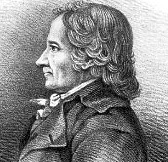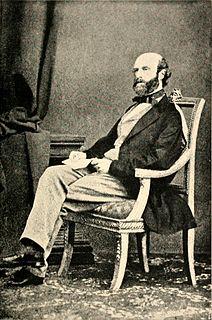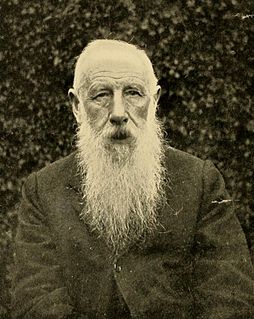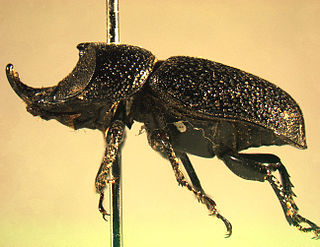
Johan Christian Fabricius was a Danish zoologist, specialising in "Insecta", which at that time included all arthropods: insects, arachnids, crustaceans and others. He was a student of Carl Linnaeus, and is considered one of the most important entomologists of the 18th century, having named nearly 10,000 species of animals, and established the basis for the modern insect classification.

Francis Walker was an English entomologist. He was born in Southgate, London, on 31 July 1809 and died at Wanstead, England on 5 October 1874. He was one of the most prolific authors in entomology, and stirred controversy during his later life as his publications resulted in a huge number of junior synonyms.

Alexander Henry Haliday was an Irish entomologist. He is primarily known for his work on Hymenoptera, Diptera, and Thysanoptera, but worked on all insect orders and on many aspects of entomology.

William Wilson Saunders FRS was a British insurance broker, entomologist and botanist.

David Sharp FRS was an English physician and entomologist who worked mainly on Coleoptera. He was among the most prolific publishers in the history of entomology with more than 250 papers that included seven major revisions and reviews and a highly influential work on the structure and modifications of the male genital structures among the beetle families. He was the editor of the Zoological Record for three decades.
Mesoclanis is a genus of tephritid or fruit flies in the family Tephritidae.
Urophora conferta is a species of tephritid or fruit flies in the genus Urophora of the family Tephritidae.
Trupanea antiqua is a species of tephritid or fruit flies in the genus Trupanea of the family Tephritidae.

The Milesiini is a large and diverse tribe of hoverflies. They mimic wasps or hornets.

Archytas is a genus of flies in the family Tachinidae.

Coccinellinae is a subfamily of lady beetles in the family Coccinellidae. There are at least 20 genera and 90 described species in Coccinellinae.

Ross Taylor Bell was an American entomologist with particular interest in the invertebrate natural history of Vermont, United States, and carabid beetles. Together with his wife, Joyce Bell, his work at the University of Vermont was largely taxonomic, where they described more than 75% of the rhysodine species known to science. Ross also wrote a number of seminal papers in his chosen field.
Merlin Owen Pasco was a New Zealand entomologist. Pasco discovered several species of moth previously unknown to science and collected numerous specimens.

Attelabinae is a subfamily of leaf-rolling weevils in the beetle family Attelabidae. There are at least 20 genera and more than 690 described species in Attelabinae.

Syndesinae is a subfamily of stag beetles in the family Lucanidae. There are at least two genera and four described species in Syndesinae.
Pseudeutreta quadrigutta is a species of tephritid or fruit flies in the genus Pseudeutreta of the family Tephritidae.
Mesoclanis dubia is a species of tephritid or fruit flies in the genus Mesoclanis of the family Tephritidae.
Deineches is a genus of hoverflies from the family Syrphidae, in the order Diptera.
Hybomorphus is a genus of weevil in the family Curculionidae. There is just one species in the genus, the type species, Hybomorphus melanosomus, the Lord Howe Island ground weevil.











